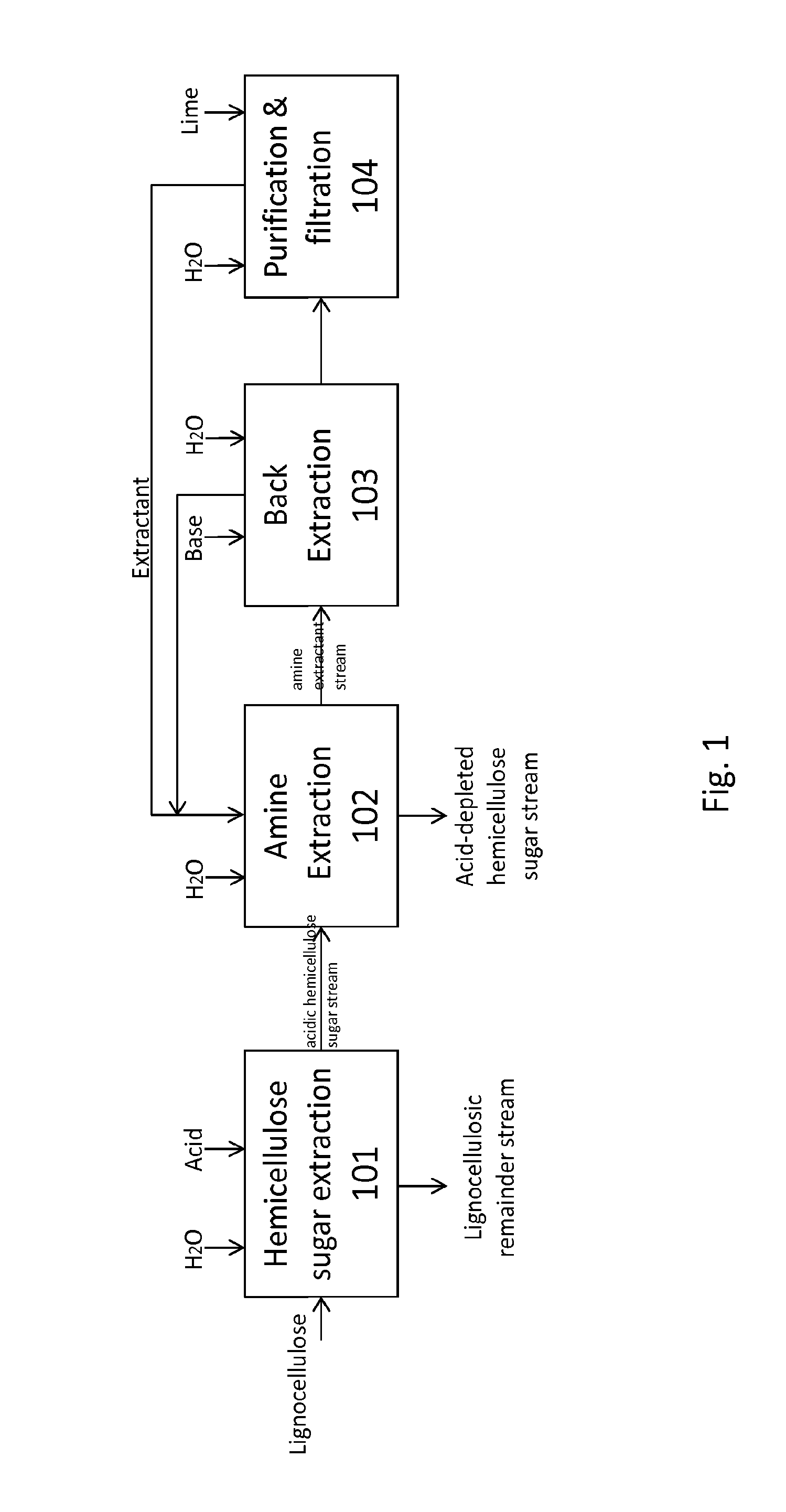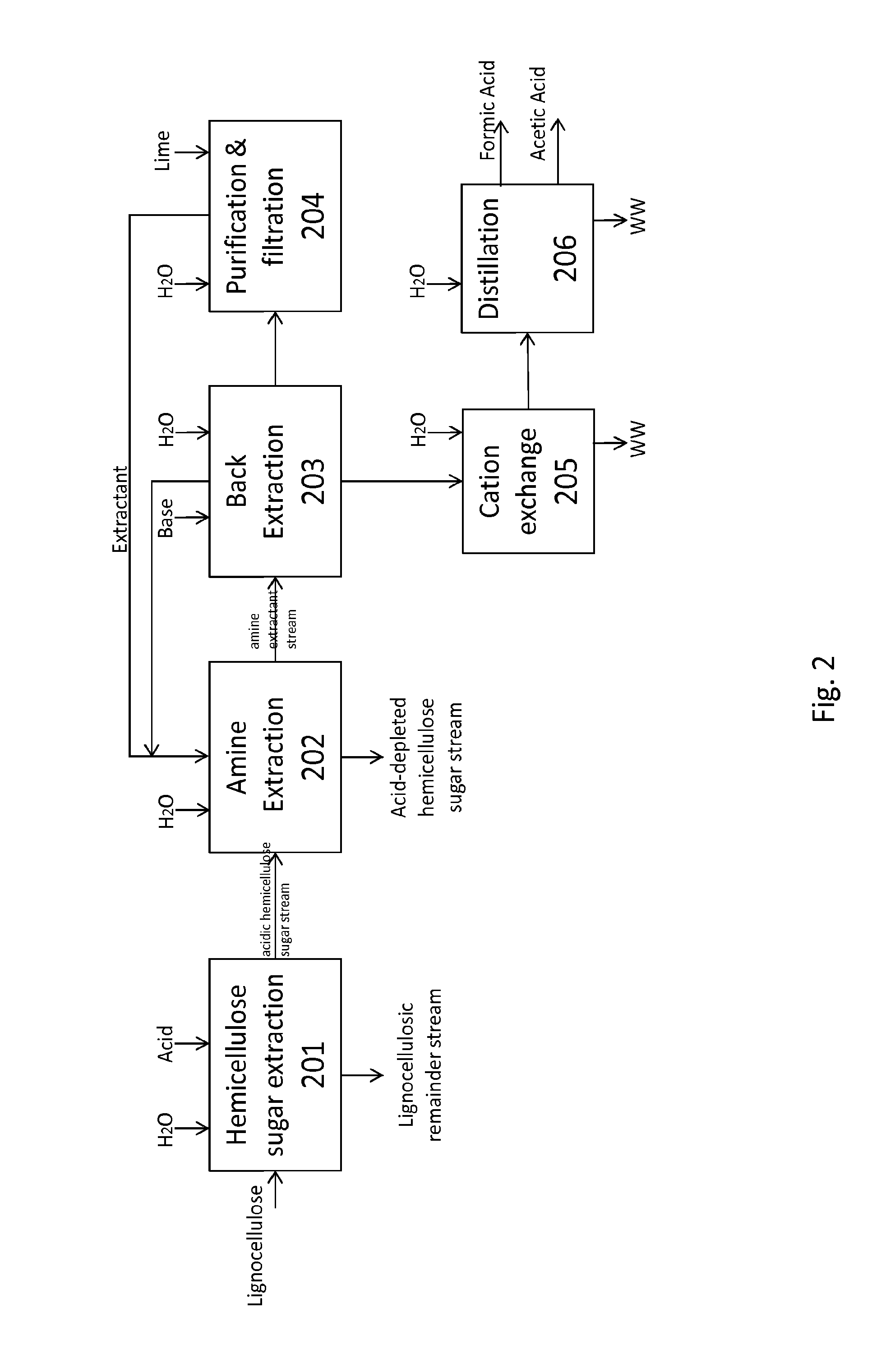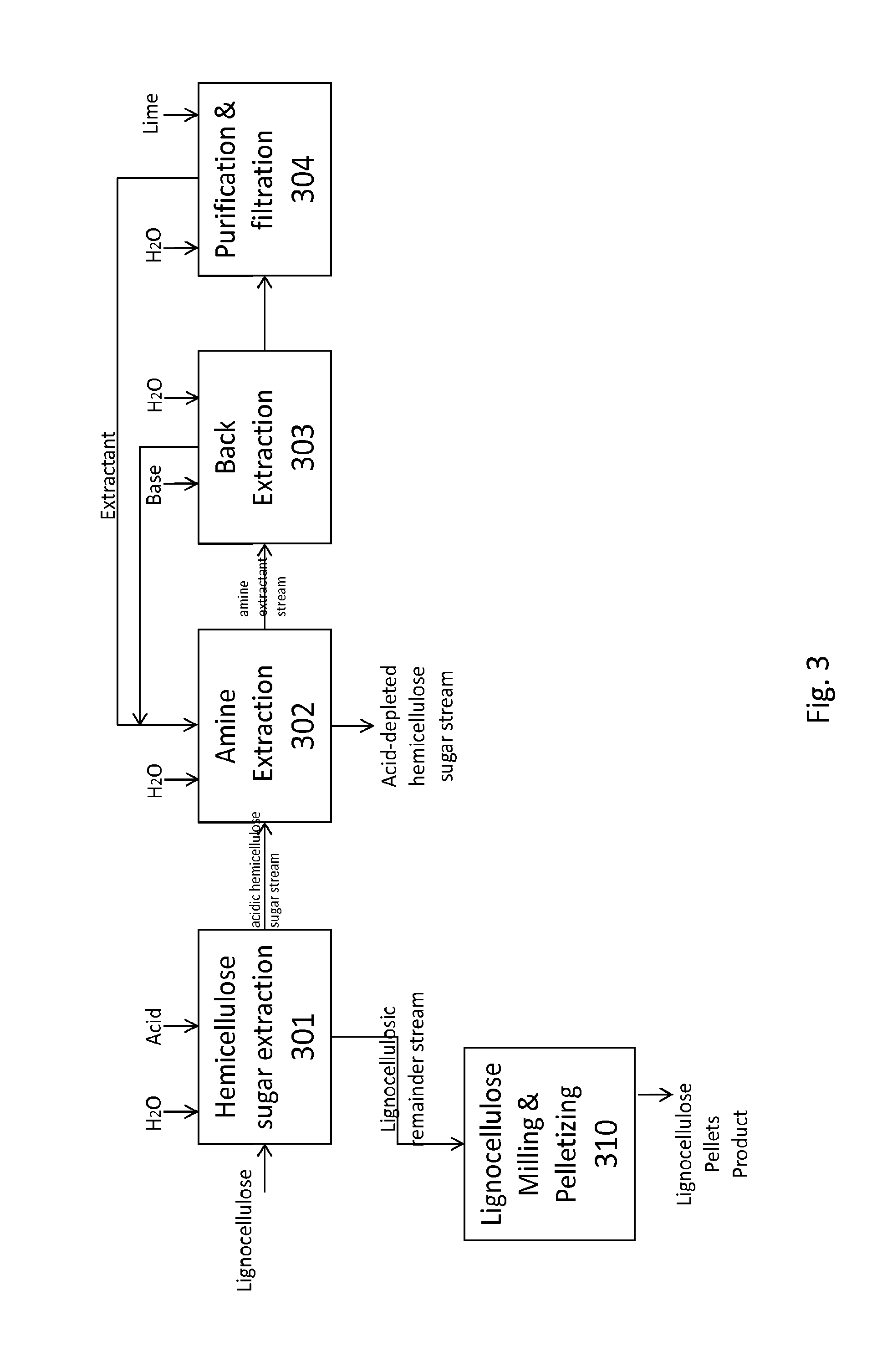Methods for treating lignocellulosic materials
a technology of lignocellulosic biomass and treatment method, which is applied in the field of processing of lignocellulosic biomass materials, can solve the problems of complex solution of multiple components and complex process to extract c5 and c6 sugar from biomass, and achieve the effect of reducing the number of steps
- Summary
- Abstract
- Description
- Claims
- Application Information
AI Technical Summary
Benefits of technology
Problems solved by technology
Method used
Image
Examples
example 1
Small Scale Hemicellulose Sugar Extraction
[0665]Table 1 provides a summary of chemical analysis of the liquor resulting from hemicellulose sugar extraction of various biomass types. The % monomeric sugar is expressed as % weight out of total sugars weight. All other results are expressed as % weight relative to dry biomass.
[0666]All treatments were carried out in a 0.5 L pressure reactor equipped with a stirrer and heating-cooling system. The reactor was charged with the biomass and the liquid at amounts given in the table. The reactor was heated to the temperature indicated in the table, time count was started once the reactor reached 5° C. below the designated temperature. Once the time elapsed, the reactor was cooled down. Solid and liquid were separated, and the content of the obtained liquor was analyzed, all data was back calculated relative to dry biomass weight. HPLC methods were applied to evaluate % Total Sugars in the liquor, % monomeric sugars and % Acetic Acid. The % De...
example 2
Large Scale Chemical Analysis of Lignocellulose Matter after Hemicellulose Sugar Extraction
[0667]Table 2 provides a summary of chemical analysis of various types of biomass after hemicellulose sugar extraction.
[0668]Pine (ref A1202102-5): Fresh Loblloly pine chips (145.9 Lb dry wood) were fed into a Rapid Cycle Digester (RDC, Andritz, Springfield, Ohio. An acid aqueous solution (500 Lb) was prepared by adding 0.3% H2SO4 and 0.2% SO2 to water in a separate tank. The solution was heated to 135 C and then added to the digester to cover the wood. The solution was circulated through the wood for 40 minutes while maintaining the temperature. After 60 minutes, the resulting liquor was drained to a liquor tank and using steam the wood was blown to a cyclone to collect the wood (128.3 Lb dry wood) and vent the vapor. The extracted wood was analyzed for sugar content, carbohydrate composition, ash, elements (by ICP), and DCM extractives. The analyses of the hemi depleted lignocellulose materi...
example 3
Aqueous and Organic Streams Resulting from Amine Extraction with Hardwood
[0671]The acidic hemicellulose sugar stream resulting from hemicellulose sugar extraction of Eucalyptus chips (as exemplified in Example 2) was used in this small scale experiment. The aqueous stream before the extraction was prepared by extracting eucalyptus in a solution containing 0.5% H2SO4 and 0.2% SO2, separating the liquid from the solid, and contacting the liquid with a strong cation exchange resin. The results provided were obtained in a batch experiment, where the organic phase (amine extractant; tri-laurylamine:hexanol ratio 3:7) to aqueous phase (hemicellulose sugar stream) ratio was 4:1, contact time 15 minutes at 60° C. A highly efficient extraction of sulfuric acid and acetic acid is observed, along with good extraction of acid soluble lignin (75%) and minimal loss of sugars (2%) into the organic phase.
[0672]Table 3 provides chemical analysis of the aqueous stream before and after the amine extra...
PUM
| Property | Measurement | Unit |
|---|---|---|
| Particle size | aaaaa | aaaaa |
| Particle size | aaaaa | aaaaa |
| Fraction | aaaaa | aaaaa |
Abstract
Description
Claims
Application Information
 Login to View More
Login to View More - R&D
- Intellectual Property
- Life Sciences
- Materials
- Tech Scout
- Unparalleled Data Quality
- Higher Quality Content
- 60% Fewer Hallucinations
Browse by: Latest US Patents, China's latest patents, Technical Efficacy Thesaurus, Application Domain, Technology Topic, Popular Technical Reports.
© 2025 PatSnap. All rights reserved.Legal|Privacy policy|Modern Slavery Act Transparency Statement|Sitemap|About US| Contact US: help@patsnap.com



